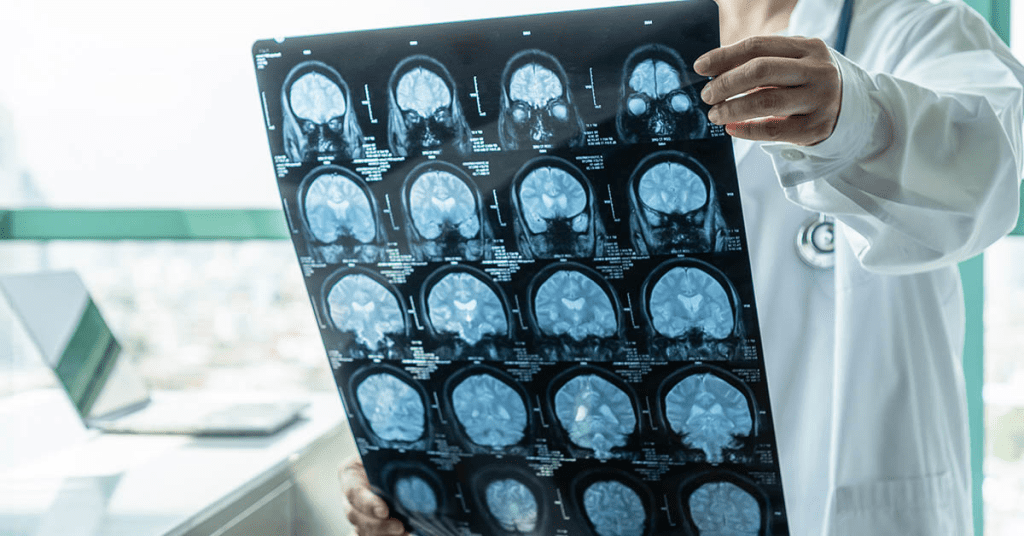In today’s fast-paced world, many of us prioritize physical appearance or career success, often overlooking the deeper implications of our lifestyle choices. Dr. Kim Johnson Hatchett, a neurologist, points out that the scariest habit she observes is the neglect of physical activity, particularly strength training, and its alarming impact on brain health. In this article, we’ll delve into why neglecting your body might be the most perilous thing you can do to your brain.
The Connection Between Muscle and Brain Health

We often think of brain health and physical health as separate entities. However, Dr. Hatchett emphasizes that our muscles and brain are closely linked. Muscle weakness can significantly reduce the brain’s production of nerve growth factor (NGF), a vital peptide for neuron function and regeneration.
Dr. Hatchett has witnessed numerous patients reporting muscle strength decline without realizing it could stem from deteriorating brain function. Muscle weakness doesn’t just hinder daily tasks; it can expedite cognitive decline.
Muscle Weakness: The Brain’s Silent Saboteur
Dr. Hatchett describes muscle weakness as a silent saboteur of brain health. Many of her patients, particularly those in their 30s and 40s, fail to recognize the link between their mobility issues and cognitive health. Reduced muscle movement decreases neuron stimulation in the brain.
Lack of muscle engagement reduces the production of essential peptides like NGF, supporting neurons and myelin—the protective covering facilitating efficient electrical impulse flow. The degradation of myelin leads to slower thinking, memory issues, and a higher risk of neurodegenerative diseases.
The Inactivity Epidemic and Its Consequences
Modern lifestyles, characterized by prolonged sitting and minimal movement, exacerbate this problem. Dr. Hatchett notes the troubling trend of people in their 30s and 40s neglecting exercise due to hectic schedules or sedentary leisure activities. The result is a society where physical inactivity is rampant, leading to earlier cognitive decline.
Dr. Hatchett warns, “Even a little bit of daily movement reduces your dementia risk.” The inactivity epidemic is not just weakening bodies but also minds, contributing to cognitive diseases like Alzheimer’s and dementia, increasingly affecting younger populations.
How Exercise Boosts Brain Function
Dr. Hatchett’s research indicates that regular exercise, especially strength training and cardiovascular workouts, profoundly benefits the brain. Increased blood flow during physical activity delivers more oxygen and nutrients while removing waste products, enhancing cognitive function.
Exercise also promotes neurogenesis, the formation of new neurons, particularly in areas responsible for memory and learning. Physical activity creates new neural pathways, “rewiring” the brain. Learning new movements forces the brain to adapt, strengthening both body and mind, much like building a bridge that becomes stronger with use.
The Importance of Strength Training for Cognitive Health
Strength training becomes crucial as we age. After 30, muscle mass naturally declines—a process known as sarcopenia. Without consistent strength training, this muscle loss accelerates, affecting both physical mobility and brain function. By our 50s, muscle loss can make everyday tasks significantly harder.
Dr. Hatchett emphasizes that strength training is one of the best ways to maintain both mobility and mental clarity. By lifting weights or performing resistance exercises, we stimulate the brain and prevent the decline in neural connectivity that leads to cognitive disorders. Regular strength training can delay the onset of dementia and Alzheimer’s by keeping both the body and brain active.
Reclaiming Control Over the Aging Process

Dr. Hatchett’s key message is that physical and mental decline often associated with aging is not inevitable. Through regular physical activity, particularly strength training, we can take control of our health. Just as saving for retirement ensures financial security, exercising today invests in our future brain health.
She encourages everyone to rethink their approach to aging. Instead of accepting weakness and cognitive decline as part of growing older, recognize that exercise can help maintain strength, mobility, and mental clarity well into later years. Consistent effort can lead to an active, vibrant life even in your 60s, 70s, and beyond.
The Simple Steps to Protect Your Brain

It’s never too late to start investing in your brain’s future. Dr. Hatchett offers practical advice to incorporate more movement into daily life:
- Incorporate Strength Training: Lifting weights or using resistance bands can be done at home or in a gym. Even small amounts help preserve muscle mass and improve cognitive health.
- Move More During the Day: Regular movement—walking, stretching, or taking the stairs—can make a big difference.
- Try Something New: Engage in new physical activities to challenge both your body and brain. Yoga, Pilates, or dancing can create new neural pathways and improve coordination.
- Consistency is Key: Make physical activity a part of your daily routine for long-term benefits.
Conclusion: Exercise Now to Protect Your Brain’s Future

Dr. Hatchett’s insights remind us that neglecting physical health directly impacts our brain’s future. The scariest thing she observes isn’t just muscle weakness—it’s the cognitive decline that follows years of inactivity. However, her message is hopeful: by incorporating regular strength training and movement, we can prevent muscle loss, safeguard our brains, and control our aging process.
The best time to start investing in your brain’s future is now. The simple act of moving your body today could be the key to preserving your mental clarity for years to come. So, take the first step toward a healthier, stronger, and sharper future.


